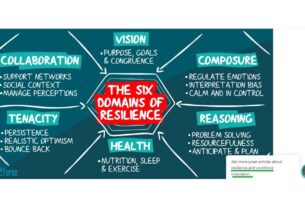Yesterday, I had the ‘pleasure’ of listening to 2 assessment experts extol the virtues of not only Common Core, but SBAC (Smarter Balanced Assessment Consortium) and PARCC (Partnership for the Assessment of Readiness in College and Careers) as well. Much has been written about the SBAC, PARCC. Before we get too far into the experts and their views, here’s a bit of background on the financial costs of assessments.

2013 Report:
According to the 2013 NCES, The National Center for Educational Statistics (an arm of the U.S. Dept. of Education) Report, “Condition of Education 2013”, (see: http://nces.ed.gov/pubs2013/2013037.pdf),
‘The single largest component of current expenditures was instruction, amounting to about 61 percent of the total, or $6,852 per student in 2009–10. These expenditures include salaries and benefits of teachers and teaching assistants, as well as costs for instructional materials and instructional services provided under contract. Between 1999–2000 and 2009–10, expenditures for instruction per student increased by 19 percent. Expenditures for some major school activities increased more rapidly than this. For example, expenditures for student support services, such as for guidance and health personnel, increased by 35 percent, from $460 to $622. Expenditures per student for instructional staff services, including curriculum development, staff training, libraries, and media and computer centers, increased by 28 percent, reaching $536 in 2009–10. Also, transportation costs per student increased by 25 percent during this period, reaching $465 per student. In contrast, some categories of expenditure increased at a slower rate than instruction. School and general administrative costs per student and food services expenditures per student both increased
by 15 percent, reaching $830 and $425, respectively, in 2009–10. Expenditures per student for operation and
maintenance of schools increased by the same percentage as instruction costs (19 percent) and reached $1,063 per
student in 2009–10.’ Do you see ‘assessments’ anywhere in the above descriptions? I don’t!
The above excerpt is from Chapter 3, aptly named ‘Finance’. Assessments are in Chapter 4 and will give you gobs of information EXCEPT how much the assessments cost.
However….
As has been well reported, written, and spoken about was the U.S. Dept. of Ed’s 2010 move to ensure MORE assessments could be taken. This is from the National Conference of State Legislators, “States will need new assessments to measure student progress against the Standards. In 2010, in recognition of this need, the U.S. Department of Education (ED) awarded two assessment consortia $330 million in Race to the Top competitive grants to develop assessments aligned to the Standards:
- $186 million to Partnership for Assessment of Readiness for College and Careers (PARCC)
- $176 million to Smarter Balanced Assessment Consortium (SBAC). “
FYI or ICYMI:
To ensure we’re an educationally assessed nation, the National Assessment of Educational Progress was created via a mandate from Congress. According to their website, the first assessing was 1969-70 school year. Somewhere between 2003-2007, each of our United States got NAEP state level coordinators. Their jobs are to be a liasion between the State Departments of Education and the NAEP. They get to analyze collected data before sharing in further across or up the chain of offices, authorities. Over the years, many contracts and/or grants have been awarded to various companies, all in the name of educational assessment. There are subcontractors as well. AIR(American Institutes of Research), NCS (National Computer Systems), NCS Pearson (an arm of Pearson Publishing), and Aspen Systems Corporation were among the subcontractors anywhere from 1996 to 2003. So while I’ve listed the biggest companies according to their length of service, know there were, at times, others involved as well:
ETS (Educational Testing Services, non profit organization established in 1947) has been awarded assessment contracts/grants since 1983.
Westat, an employee owned research firm, formed in 1963 has served NAEP since 1983 as well.
AIR (American Institutes for Research), moved from subcontractor to alliance member sometime in 2003-07. It handled development for national-only subjects, as well as the scoring rubrics, assisting in scoring and the training of scorers; to conduct small-scale pilot tests of the items and rubrics; and to participate in reviews of items. ETS got to handle math, science, reading, writing’s design, analyzing, and reporting during this time period. Pearson Publishing was in charge of preparing the assessments, delivering them, and scoring them. Joining them in 2006, Government Micro Resources, Inc., known as Fulcrum IT Services Company as of 2006, to acquire, develop, implement, and support Internet-related applications and services for NAEP and the NAEP contractors. (this was about the time the NAEP state coordinators were put in place)
From 2008-2012, you’ll find AIR(see above) , CCSSO (Council of Chief State School Officers, half owner of the CCSS copyright),CRP, Inc. (works with several government agencies), ETS (see above), Fulcrum IT (see above), Pearson Publishing. Along with the other companies, you’ll find SEAs (State Education Agencies) involved. Every aspect (including marketing at trade shows, conferences) of assessments you can imagine is covered.
Currently, the Big 12:
To date, the NAEP has 12 contractors handling our students assessments! Now, I’ve no idea the size of the contracts/grants. Frankly, I don’t care how much money they’ve received. That’s the ‘blood on their hands’, not mine. The order in which each contract is listed, is alphabetically.
AIR, BI (Business Intelligence, Inc. a US Veteran owned company working with NAEP since 2008), CCSSO, CRP, Inc., ETS, Fulcrum IT, Hager Sharp, HumRRO (Human Resources Research Organization. Established in 1951 as a non profit which works with P3s (public private partnerships), Kauffman and Associates (an SBA certified 8 company serving the native Americans), Optimal Solutions, LLC (begun in 2000, a public policy research group), Pearson, SEAs, and Westat. If you are interested to see the exact history, http://nces.ed.gov/nationsreportcard/contracts/history.aspx#partners69
So how do the NAEP, PARCC, and SBAC intersect?
From their white paper report “Future of the NAEP”, here are their words as to how all these tie together. “As we look to the future, NAEP will be called upon to do all that it has historically done and more. We see at least four major trends to which NAEP must respond. First, NAEP must provide value as a nationally representative assessment when it is
likely that other assessments will also provide information about student achievement that may be aggregated and compared across districts, states, and even at the national level. Forty-six states and the District of Columbia have adopted
the new Common Core State Standards (CCSS) in English language arts (ELA) and mathematics. Two federally funded state consortia are developing assessments aligned with the CCSS for general education students in grades 3-8 and high school—
the SMARTER Balanced Assessment Consortium (SBAC) and the Partnership for Assessment of Readiness for College and Careers (PARCC).” (all the italicized sections below are also directly from the report)
In the works:
“Two more state consortia are developing ELA and mathematics assessments linked to the CCSS for students with severe cognitive disabilities – the Dynamic Learning Maps Assessment Consortium (DLM) and the National Center and State
Collaborative Assessment Consortium (NCSC).Yet another, the World-Class Instructional Design and Assessment (WIDA) consortium, is developing English language proficiency assessments.”
Even the NAEP can’t predict the future of assessments, it just knows we have to have high stakes ones!
“It is not entirely clear how NAEP’s role may change with the advent of these new assessments. However, we can
anticipate that many of these consortium tests will become “high-stakes” as they are used for accountability purposes. In response, educators will shift their focus toward preparation for these new accountability tests. If NAEP remains a low-stakes assessment program aligned to frameworks that reach beyond the confines of the CCSS, then it will be well positioned to provide uniquely valuable information about the extent to which other learning is maintained or declines as curriculum and instruction evolve toward the CCSS. History suggests that even for ELA and mathematics content included in the CCSS, achievement trends shown on NAEP will likely differ from those seen on the high-stakes tests themselves.”
Among their other purposes, measuring MORE outcomes! Data tracking, mining, and leading the way in innovating the assessments! With all this change, the NAEP even asserts that it will be more important than ever. We’ll need to continue to keep an eye on this agency. **NOTE: I’ll be writing more in-depth about some of the newer consortia in the coming days, so stay tuned.
About the experts:
As I shared with you in the beginning, I was listening to two assessment experts yesterday during a webinar funded by Joyce Foundation(gives grants of all sizes to all kinds of educational efforts, according to their 2013 grant list, money was given to research more ways to have K-12 human capital policy making and research. Another grant was given to continue to help implement CCSS) and hosted by “Education Weekly”.
The experts were Randy Bennett of ETS via assessment innovation with a specialty in cognitive based learning; Dr. Daniel Hickey of Indiana University as a research scientist. Dr. Hickey was even very instrumental in creating the digital educational badges you may be seeing more and more of. Both are very well versed in their areas. Both are convinced CCSS holds much promise-if handled correctly. They did not quite agree on a few things during the presentation, but were very respectful of each other. Both are sold out via sponsors, beliefs that high stakes assessments are here to stay, in fact will become moreso. They like the SBAC/PARCC. Each had a favorite and it was ‘debated’ which one will survive the scrutiny presently in the news.
Here, in bullet point style are the biggest takeaways about the educational obsession with assessments:
- Standard of importance is the assessments must be tied to common measures.
- At least one of the presenters used an image of Tea Party symbolism and anti Common Core symbol as part of the problem.
- It is being perceived the biggest push-back against SBAC/PARCC is due to the length of the tests.
- High stakes assessments are vital to close the achievement gap; to improve US education in order to global compete.
- Consequential testing needs to be transformed into ‘real world, best practices, learning challenges’ and calibrated to have common exercises everyone can complete, especially projects.
- Whatever assessments used, embed them; award certificates for tasks like problem solving.
- Use HSA (high stakes assessments) to drive schools.
- Education needs to be more open to all and on-line.
- Formative/summative assessments should be combined, aligned, synergized.
- Don’t blame the assessments, blame how they are used incorrectly.
- CCSS is an important step in all of this.

Self worth, esteem, thinking skills, learning skills.
NO amount of money is worth killing a mind.



3 thoughts on “WYBI Wednesday: Assess, Obsess, then Assess Again”